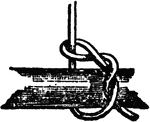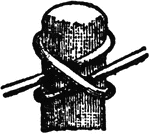Clipart tagged: ‘Sheepshank’

Knots
Sheepshank. Note: the loop of a knot is called the "bright." The "standing part" of the rope is the…

Knots and Splices
"Knots and splices include all the various methods of tying, fastening, and joining ropes or cords.…
Knots and Splices
"Knots and splices include all the various methods of tying, fastening, and joining ropes or cords.…
Knots and Splices
"Knots and splices include all the various methods of tying, fastening, and joining ropes or cords.…
Knots and Splices
"Knots and splices include all the various methods of tying, fastening, and joining ropes or cords.…

Knots and Splices
"Knots and splices include all the various methods of tying, fastening, and joining ropes or cords.…

Knots and Splices
"Knots and splices include all the various methods of tying, fastening, and joining ropes or cords.…

Knots and Splices
"Knots and splices include all the various methods of tying, fastening, and joining ropes or cords.…

Knots and Splices
"Knots and splices include all the various methods of tying, fastening, and joining ropes or cords.…

Knots and Splices
"Knots and splices include all the various methods of tying, fastening, and joining ropes or cords.…
Knots and Splices
"Knots and splices include all the various methods of tying, fastening, and joining ropes or cords.…
Knots and Splices
"Knots and splices include all the various methods of tying, fastening, and joining ropes or cords.…
Knots and Splices
"Knots and splices include all the various methods of tying, fastening, and joining ropes or cords.…

Knots and Splices
"Knots and splices include all the various methods of tying, fastening, and joining ropes or cords.…
Knots and Splices
"Knots and splices include all the various methods of tying, fastening, and joining ropes or cords.…
Knots and Splices
"Knots and splices include all the various methods of tying, fastening, and joining ropes or cords.…

Knots and Splices
"Knots and splices include all the various methods of tying, fastening, and joining ropes or cords.…

Knots and Splices
"Knots and splices include all the various methods of tying, fastening, and joining ropes or cords.…

Knots and Splices
"Knots and splices include all the various methods of tying, fastening, and joining ropes or cords.…

Knots and Splices
"Knots and splices include all the various methods of tying, fastening, and joining ropes or cords.…

Knots and Splices
"Knots and splices include all the various methods of tying, fastening, and joining ropes or cords.…
Sheepshank
The sheepshank is "a kind of knot, hitch, or bend made on a rope to shorten it temporarily." -Whitney,…